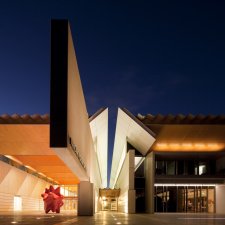- About us
- Support the Gallery
- Venue hire
- Publications
- Research library
- Organisation chart
- Employment
- Contact us
- Make a booking
- Onsite programs
- Online programs
- School visit information
- Learning resources
- Little Darlings
- Professional learning
Pixie O’Harris MBE (1903–1991), author and illustrator, was born Rona Olive Harris in Cardiff, one of the eight children of painter, George Frederick Harris. Her family emigrated to Australia in 1920 and it was while they were en route to Perth that Rona decided to permanently adopt her shipboard nickname, Pixie. In Sydney from 1922, she studied at Julian Ashton’s art school and got her first job as a commercial artist for stationer and publisher John Sands Ltd. In 1923, she received her first commission, producing illustrations for a children’s book titled Cinderella’s Party. Around 1924 she began publishing stories, drawings and cartoons in papers such as the Bulletin, Triad and Sydney Mail and also worked for a time as a fashion illustrator for Hordern’s department store. The Pixie O Harris Fairy Book, a collection of radio stories, appeared in 1925 – the year that she changed her surname to ‘O’Harris’ after a printer mistakenly added an apostrophe after her middle initial. During the late 1920s, O’Harris wrote and broadcast a children’s program on 2UE and in the 1930s began contributing caricatures and illustrations to Women’s Budget and the Australian Women’s Weekly. She married journalist Bruce Pratt in Sydney in 1928. Her best-known books Pearl Pinkie and Sea Greenie and The Fortunes of Poppy Treloar appeared in 1935 and 1941 respectively. Dispirited by the bleakness of hospitals and following the birth of her third child, in 1939 O’Harris completed the first in a series of over 50 decorative murals for children’s hospital wards, clinics and nurseries. The author of 22 books of her own, O’Harris illustrated numerous works for other authors and during the 1960s, 70s and 80s enjoyed success as a portrait and landscape painter. She was awarded an MBE in 1976. Her significance to Australian children’s literature continues to be honoured through the annual Pixie O’Harris Award.
Collection: National Portrait Gallery
Purchased with funds provided by Peronelle Windeyer 2012



On one level The Companion talks about the most famous and frontline Australians, but on another it tells us about ourselves.



Visit us, learn with us, support us or work with us! Here’s a range of information about planning your visit, our history and more!



We depend on your support to keep creating our programs, exhibitions, publications and building the amazing portrait collection!